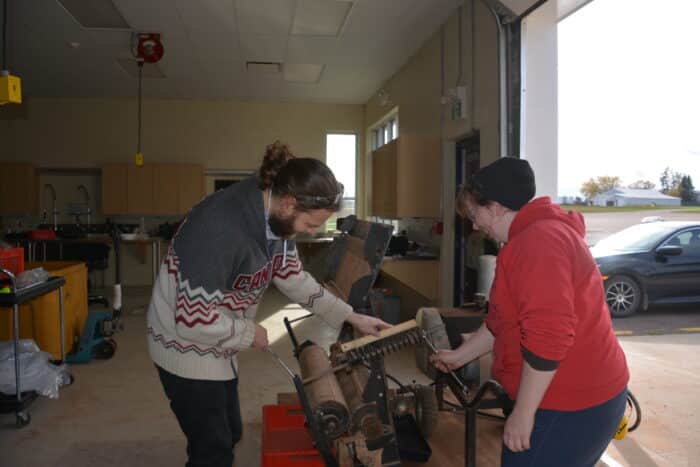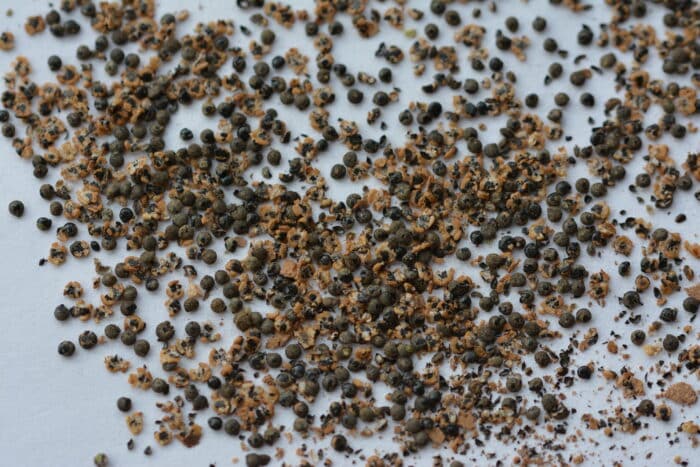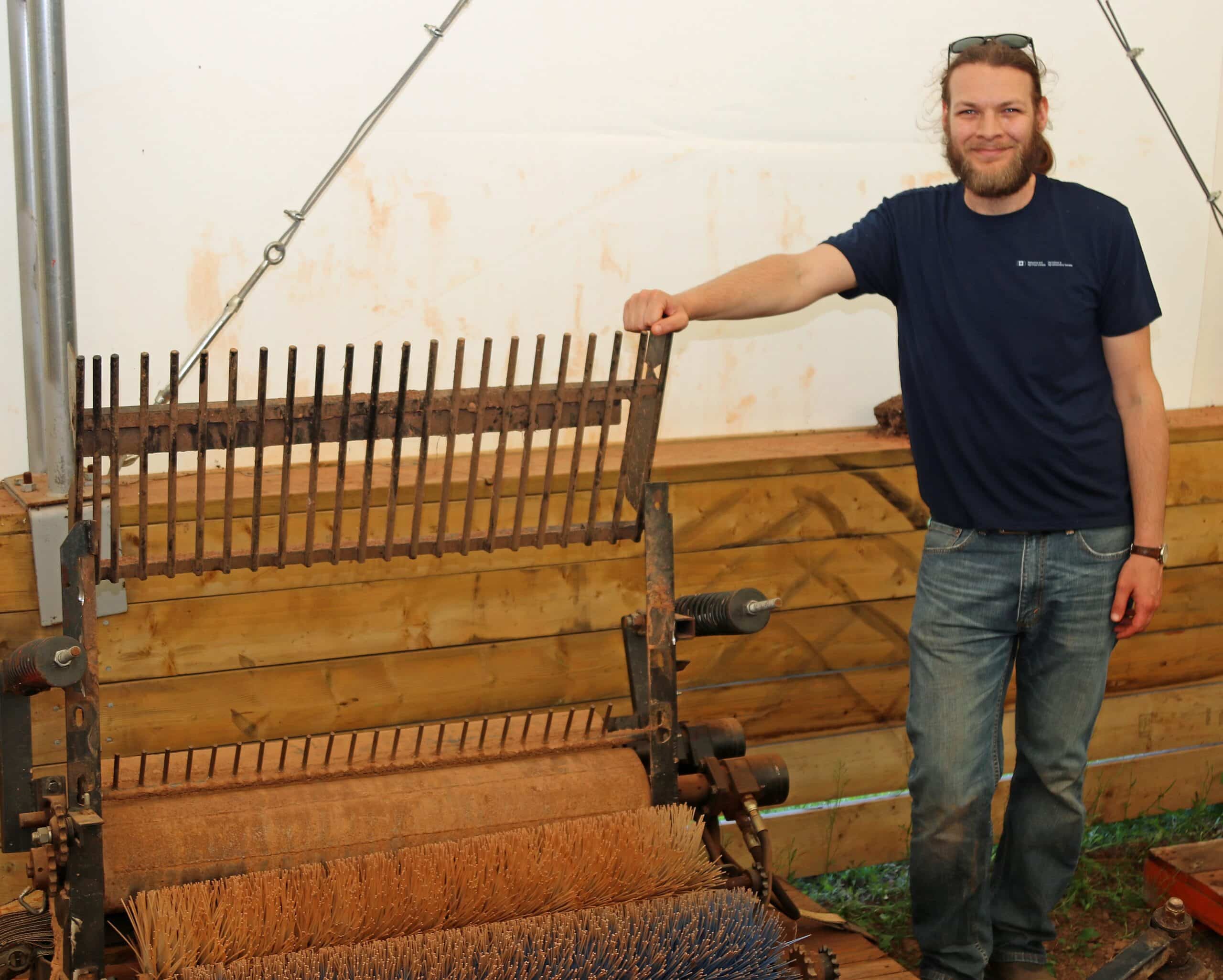An old technology could offer potato growers a new weed control solution.
An old piece of technology created more than a decade ago and subsequently shelved could soon offer potato producers a new solution when it comes to fighting weeds in their fields.
In 2011, a group of researchers at Agriculture and Agri-Food Canada’s (AAFC) Charlottetown Research and Development Centre were researching ways to control European corn borer populations. Corn borers are a common pest who lay their eggs in potato vines which then mature the following year with potentially devastating implications.
The AAFC group, led by researcher Christine Noronha, developed a piece of equipment they dubbed the potato vine crusher. It was essentially two metal rollers that were attached to a motor powered by a 10-horsepower generator. It attached to the back of a potato harvester and was designed to crush vines as potatoes were being harvested, killing the corn borer larvae in the process.
Preliminary test results for the device were extremely encouraging, indicating a success rate of 95 or greater in controlling corn borer larvae. However, the researchers quickly discovered there was a catch: because mature corn borers have wings they can fly from one field to another. That mean the majority of potato producers in a region, it not all, would have to use the device in order for it to be truly effective.
As a result, the vine crusher was mothballed and sat on a shelf – until AAFC researcher Andrew McKenzie-Gopsill learned of it about a year ago. McKenzie-Gopsill, who works out of the Charlottetown research centre, was giving a presentation at the University of Prince Edward Island at the time. He spoke about the merits of harvest weed seed control – targeting weed seeds at harvest to prevent them from returning to the seedbank – and said how great it would be if there was a device that would allow potato growers to essentially eliminate weed seeds during harvest.

It just so happened that a technician who worked in Noronha’s lab was in the audience and later told McKenzie-Gopsill that he should speak with Noronha to see if there was a way the vine crusher she had helped to develop could be repurposed.
“I went and met with Christine. She gave me an explanation of it and a bit of the history of it and said go have fun and see what you can do,” he explains.
A short time later, McKenzie-Gopsill began conducting tests with the vine crusher to see how effective it could be in controlling weeds in potato crops. Most of the initial testing involved common lambsquarters since it’s commonly found in most potato fields and studies have shown that more than 50 per cent of the weed’s population in P.E.I. and New Brunswick is resistant to Sencor, the most commonly used herbicide for potato weed management in the region. Subsequent tests also involved red root pigweed, yellow foxtail, barnyard grass and volunteer canola to provide data on a range of weed seed sizes and species.
The tests considered a number of different factors including tension settings of the device and the speed it should be operated at. Three different types of tests were conducted: one involving weed seed samples that had been crushed with the device and placed in a Petrie dish to grow; another in which the crushed seeds were mixed with field soil; and a third in which dried potato mass was mixed with the crushed seed.
McKenzie-Gopsill says the preliminary test results from using the repurposed device have been encouraging. In the tests with the field soil, there was about a 65 per cent reduction in the germination of common lambsquarters while red root pigweed was controlled in about 85 per cent of cases and larger seeds were controlled at a rate of about 95 per cent. The numbers dropped in tests involving potato biomass, but still ranged between 40 and 60 per cent control.
“I am very excited about it and so are some of the other people out here which makes me quite happy,” McKenzie-Gopsill says of the early test results.
“In potatoes, we have one post-emergent broadleaf option available to producers. If the pre-emergent option fails you that means there’s only one other option available to producers and you kind of have to cross your fingers and hope it’s going to work. This is hopefully going to give them another option to reduce (weed) populations.”
The way the weed seed crusher works is relatively simple. As potatoes are pulled from the soil, the vines and other extraneous materials are pulled through it, smashed, and then deposited back in the field.
In most cases, once the weed seed has been crushed it cannot produce another weed, McKenzie-Gopsill explains. In a few cases, some seeds that were crushed in half still germinated but were unable to grow essential elements such as shoots or roots and were unable to survive for long.

One of the things that could make the weed seed crusher an attractive weed control option for potato growers is its cost. There’s no patent on the design and its available free of charge to any interested grower. The only cost is the parts, which McKenzie-Gopsill estimated could be purchases for a couple of thousand dollars.
Another potential attraction is its environmental benefits. Fewer weeds would mean less reliance on potentially harmful herbicides.
“Anything that we can do to try and reduce reliance on herbicides or add extra tools to our toolbox to reduce weed pressure so that maybe some years we don’t need a herbicide or we can reduce the rate or frequency of herbicide is a good thing,” he adds.
McKenzie-Gopsill says the plan is to begin field testing the weed seed crusher at the AAFC’s test plot at the research centre in Charlottetown this fall. If it performs as expected, AAFC will consider field testing it with producers on the East Coast next season. The P.E.I. Potato Board has already expressed interest in having its producers test the device in actual field conditions.
Ryan Barrett, a research and agronomy specialist with the P.E.I. Potato Board, says weeds are a perennial issue for potato growers on the Island and producers need to start looking at other options to reduce the weed seed bank beyond just herbicides. He’s optimistic about the potential of the weed seed crusher based on the preliminary test results.
“It’s early days, but there appears to be some potential in this approach,” he says in an email interview.
“The fact that a vine crusher could be installed on the harvester without an additional field operation should not increase time or costs for the producer, beyond the equipment upgrade. While there would been to be work done to ensure that the vine crusher doesn’t slow down harvesting operations while effectively destroying weeds seeds, there could be some potential in this work.”
That’s music to the ears of McKenzie-Gopsill.
“It’s my hope that producers are accepting of this technology and approach because I’d really like to see this kind of technology implemented across our region.”
Header photo – AAFC researcher Andrew McKenzie-Gopsill stands next to the vine crusher. Photo: AAFC
Related Articles
Moving Manitoba Potato Research Forward at CMCDC









